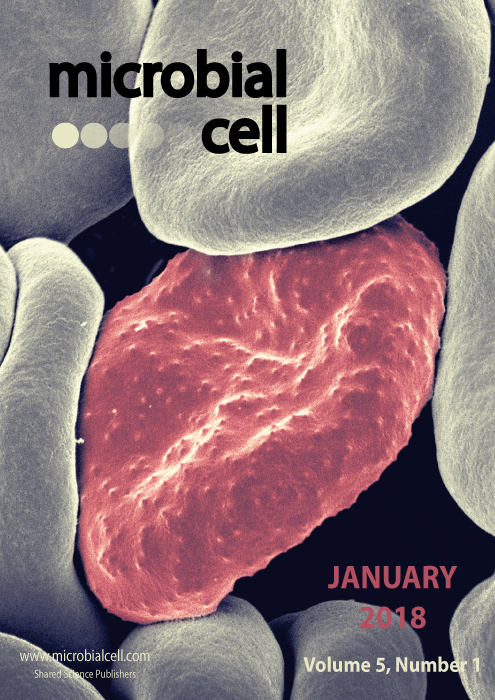Back to issue: January 2018
Microbial Cell – January 2018
Scanning electron micrograph of red blood cells infected with Plasmodium falciparum. During its development, the parasite forms protrusions called ‘knobs’ on the surface of its host red blood cell which enable it to avoid destruction and cause inflammation. The picture shows a knob-rich infected blood cell surrounded by knobless uninfected blood cells (image by Rick Fairhurst and Jordan Zuspann, National Institute of Allergy and Infectious Diseases, National Institutes of Health, USA); image modified by MIC. The cover is published under the Creative Commons Attribution (CC BY) license.

